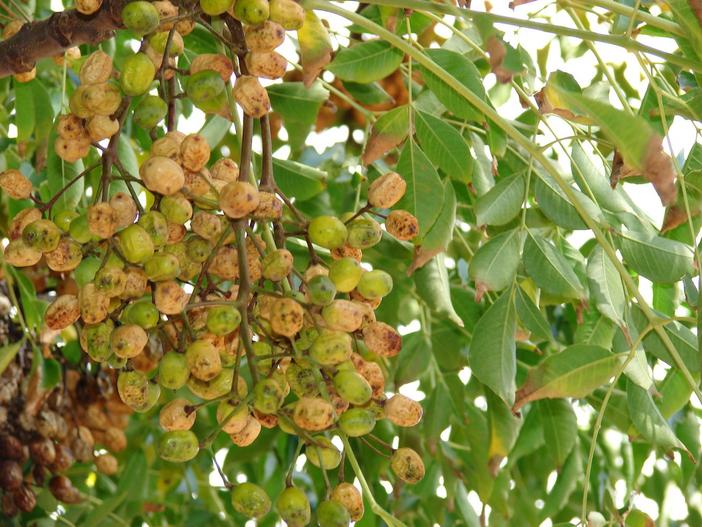Chinaberrytree
(Melia azedarach)
Chinaberrytree (Melia azedarach)
/
/

Forest and Kim Starr
CC BY 2.0
Image By:
Forest and Kim Starr
Recorded By:
Copyright:
CC BY 2.0
Copyright Notice:
Photo by: Forest and Kim Starr | License Type: CC BY 2.0 | License URL: https://creativecommons.org/licenses/by/2.0/ | Uploader: Starr Environmental | Publisher: Flickr













































































Estimated Native Range
Summary
Melia azedarach, commonly known as Chinaberrytree, is a deciduous tree native to open woodlands and forest edges in South and Southeast Asia, Australasia, and parts of Australia. It typically grows to a height of 7–12 meters (20–40 ft) with a rounded crown that provides light, dappled shade. The tree is notable for its fragrant, pale purple or lilac flowers that bloom in clusters during the spring season, adding ornamental value. The fruit is a distinctive drupe, marble-sized, light yellow at maturity, and persists on the tree throughout winter, becoming wrinkled and nearly white over time. The leaves are large, up to 50 centimeters (20 in) long, with a dark green upper surface and a lighter green underside, featuring serrate margins.
Chinaberrytree is appreciated for its fragrant flowers, decorative fruit, and shade-providing canopy, making it a popular choice for urban planting, as a specimen tree, and in residential gardens. It is drought-tolerant, requiring low amounts of water once established, and adapts to a range of soil types with varying drainage capabilities. While it thrives in full sun, it can also tolerate part shade. Gardeners should be aware that the tree can become invasive outside its native range and may have aggressive roots that can disrupt pavements and structures. Additionally, all parts of the plant are toxic if ingested, and it can be prone to pests such as the white cedar moth caterpillar.CC BY-SA 4.0
Chinaberrytree is appreciated for its fragrant flowers, decorative fruit, and shade-providing canopy, making it a popular choice for urban planting, as a specimen tree, and in residential gardens. It is drought-tolerant, requiring low amounts of water once established, and adapts to a range of soil types with varying drainage capabilities. While it thrives in full sun, it can also tolerate part shade. Gardeners should be aware that the tree can become invasive outside its native range and may have aggressive roots that can disrupt pavements and structures. Additionally, all parts of the plant are toxic if ingested, and it can be prone to pests such as the white cedar moth caterpillar.CC BY-SA 4.0
Plant Description
- Plant Type: Tree
- Height: 30-50 feet
- Width: 15-25 feet
- Growth Rate: Rapid
- Flower Color: Purple
- Flowering Season: Spring
- Leaf Retention: Deciduous
Growth Requirements
- Sun: Full Sun
- Water: Low
- Drainage: Fast, Medium, Slow
Common Uses
Bird Garden, Fragrant, Showy Flowers
Natural Habitat
Open woodlands and forest edges
Other Names
Common Names: Persian Lilac , Pride Of India , Bead-Tree , Indian Lilac , Texas Umbrella Tree , Syringa Berrytree , Tulip Cedar , Umbrella Cedar , White Cedar , Chinaberry-Tree
Scientific Names: Melia azedarach , Melia dubia , Melia japonica , Melia toosendan , Melia azedarach var. subtripinnata , Melia azedarach var. japonica , Melia sempervirens , Melia composita , Melia candollei , Melia bombolo
GBIF Accepted Name: Melia azedarach L.